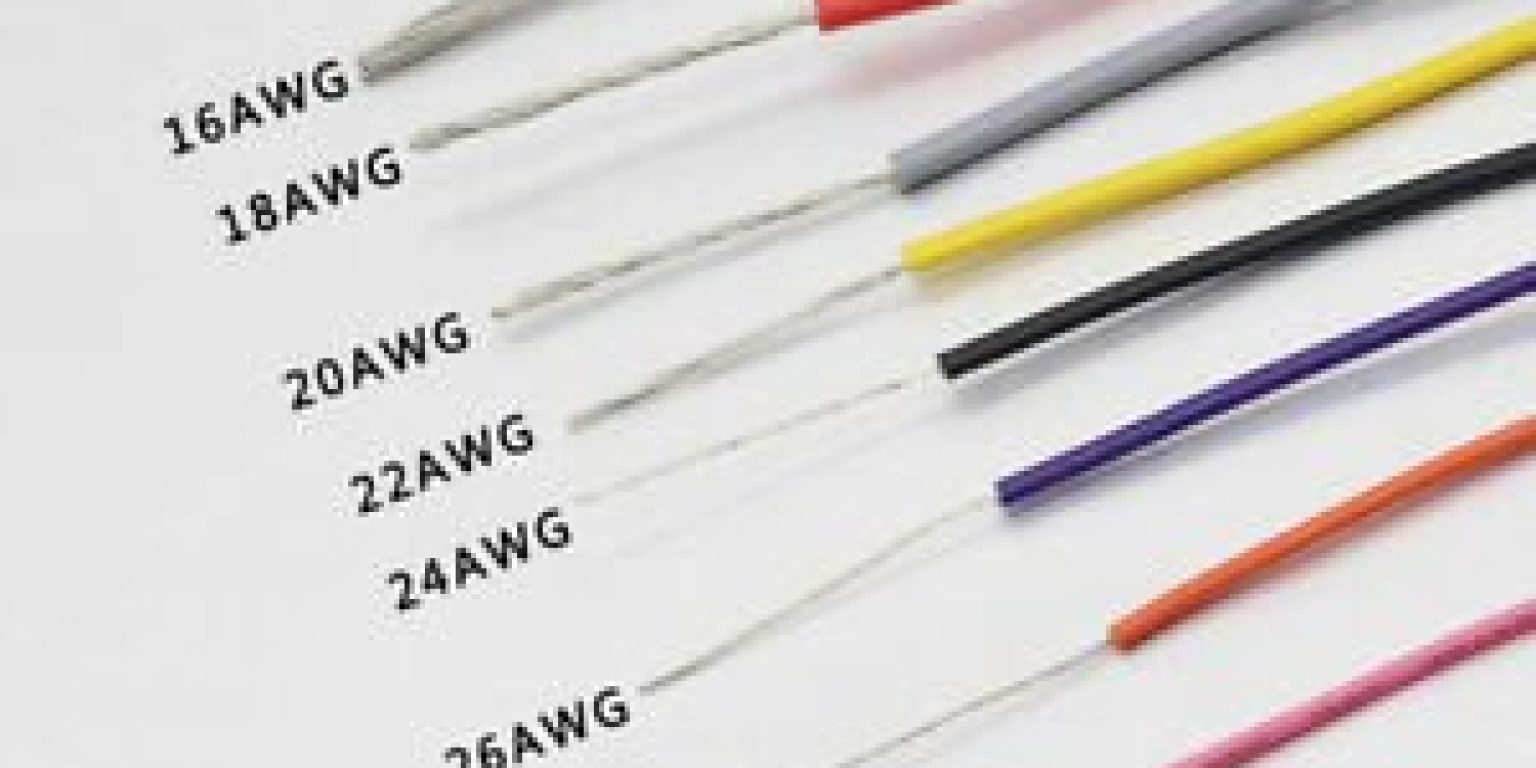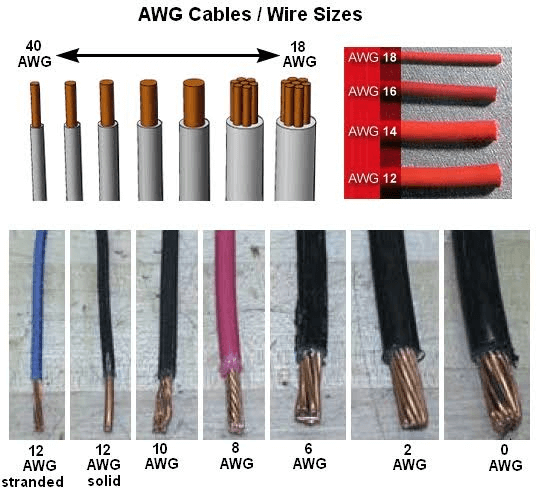AWG cable is one of the most common phrases in electrical cable terminologies. Most people mistakenly assume that the term refers to a specific electrical cable. Contrary to popular belief, this phrase is applicable across all divides. AWG is an acronym that stands for American Wire Gauge. What is American Wire Gauge (AWG)? Generally speaking, AWG is a measurement specification of sorts that gives specific dimensions for electrical wires.
Logically, every electrical wire and cable has a specific dimension. This dimension is generally denoted in the American Wire Gauge measurement standard. So, is it not accurate to say that each electrical cable in existence is an AWG electrical wire? Some people might find this to be overwhelmingly confusing. I understand why most people face difficulty comprehending the notion that each electrical cable is an AWG cable.
A cable wire gauge is one of the most critical factors you have to consider when choosing an electrical cable for a specific wiring application. For all intense and purposes, the American Wire Gauge (AWG) defines the amount of electric current that a particular electrical cable can carry without damage. Don’t you think this is important?
Failure to choose a cable that can withstand the amount of current passing through it will culminate in a disaster. This post will guide you through some critical facts that you need to know about AWG cable. More specifically, it covers information concerning the size of a wire and its role in determining the ideal cable for any specific project.
1. What is AWG cable?
Whenever people talk of AWG cables, it is easy to assume that they refer to a specific type of electrical cable. As I mentioned earlier, AWG is an acronym that stands for American Wire Gauge. Essentially, it is a measurement standard that denotes the size of every electrical wire.
So, an AWG cable is any electrical cable whose measurement is denoted using the American Wire Gauge measurement standard. Perhaps it is easier to comprehend if I flip the wording and say, cable AWG. When I put it that way, it becomes less complex, doesn’t it?
Generally speaking, American Wire Gauge sizes range from 0000 to 40 AWG. Most people often find AWG measurements to be pretty confusing. Typically, the size of any object tends to increase as the number representing its dimensions increases. However, this is not the case with any AWG power cable. As the American wire gauge number decreases, the size of the actual cable increases. For instance, a 24 AWG cable is smaller and thinner than a 6 AWG cable. Do you get the idea?
Contrary to popular belief, you cannot just walk into any electrical shop and ask for an AWG cable. As I have already indicated, AWG denotes a cable size. There are several sizes. Failure to choose the right AWG cable size for your intended application has some negative repercussions. Thus, it would be best to consult a trained and certified electrician before picking out an appropriate cable size.
2. What does AWG Wire mean?
Again, an AWG electrical wire refers to a wire whose size is represented using an American wire Gauge standard of measurement. Some people might be wondering what AWG means in a broader context. What implications does it have for your choice of cable, and why is it important? An AWG is a universal index that expresses the cross-section area of a corpulent wire in reverse and logarithmically. Frankly, the whole affair is, to a certain extent, bewildering and not just because AWG cable measurements is counterintuitive.
A solid and stranded wire might share the exact AWG measurement, but the stranded wire occupies more space than the solid wire. This confuses most people. However, it isn’t as complex as it seems. A stranded AWG power cable occupies more space than a solid wire because its wire gauge is measured by adding up the cross-sectional area of each strand. There are air pockets between each strand in a stranded wire. Thus, each cross-section of wire will occupy a larger space in a stranded wire configuration.
A wire AWG refers to the size of the wire itself and not the wire and its insulation. Someone may complain that a 12 AWG speaker cable is not 12 AWG because it looks thinner than another 12 AWG cable that he owns. The truth is that some cables look more prominent because they have thicker insulation than regular cables. For example, a 4 AWG battery cable will certainly look thicker than a standard 4 AWG cable.
3. What is 12 AWG wire? What is bigger between 12 AWG and 14 AWG?
It is important to use electrical cables that can sustain the electrical power passing through it for every electrical need. Wire gauges come in different standard sizes, each designed to withstand a specific amount of electrical current. Sensibly, some wire gauges are commonly used compared to others. A 12 AWG wire is one of the most frequently used electrical wires.
Generally speaking, any electrical wire’s applications are entirely dependent on its AWG cable current rating. What is the current rating of a 12 AWG wire? Well, this type of wire is rated for a maximum of 20 amperes. Due to its current carrying capacity, this type of wire is ideal for several applications, including kitchen wiring, bathroom wiring, outdoor receptacle wiring, to name a few. It is also necessary to note that most individuals commonly use a 12 AWG cable as a car battery cable. However, a 12 AWG battery cable has a special insulation that enables the cable to withstand the harsh conditions of a vehicle engine.
In most instances, people confuse a 12 AWG wire and a 14 AWG wire even though they are not similar. As I mentioned earlier, as the American wire gauge number decreases, the size of the actual cable increases. So, a 12 gauge wire is bigger than a 14 gauge wire. It is also important to note that the AWG cable current rating of a 12 gauge wire is higher than that of a 14 gauge wire.
4. What is AWG in cable size?
As I have indicated severally, AWG is an acronym that stands for American Wire Gauge. Essentially, it is a universal measurement standard that denotes the sizes of different electrical cables. I am certain most of us have come across the phrase ‘AWG cable size’ at one point or another. Do you understand what it means?
Most people assume that AWG in cable size refers to the size of the cable, but that is not entirely true. A considerable proportion of people believe that a wire and a cable are the same things. In reality, they are two different things.
A wire is a single conductor, whereas a cable is a cluster of conductors that run in parallel and are warped or merged to form a solitary casing under an insulation material. It is easy to assume that a cable AWG refers to the size of a cable. That is a wrong assumption because the AWG in cable indicates the size of the conductor material, excluding the cable’s insulation.
It is best to use a 12 gauge or a 14 gauge cable for classic household wiring applications. As I mentioned earlier, cable diameter decreases with each increase in the cable’s gauge. Higher gauge wires have thin wires and smaller diameters compared to lower gauge wires. When carrying out installations over extended distances, it would be best to use a 24 AWG cable or a 26 AWG cable.
5. How to measure cable AWG?
A vast proportion of cable manufacturers label their gauge measurements in American Wire Gauge (AWG). Considering that a cable’s gauge has significant implications on whether it is safe to use in a particular application, you ought to know the gauge measurements of any wire you intend to use. In most instances, you don’t have to measure a cable’s AWG. Most reliable cable manufacturers take it upon themselves to indicate AWG cable measurements on the cable’s outer insulation. All you need to do is look for the measurements on the cable’s insulation, and you will be good to go. But what do you do when the manufacturer does not indicate the AWG cable measurements?
When dealing with a solid-core wire, you can easily obtain the gauge measurements by measuring the conductor’s diameter. It is a bit more complex to get the cable AWG measurements of a stranded cable. Assuming you intend to quantify the size of a 12 AWG 4 conductor cable with stranded wires, you have to measure the diameter of a single strand first.
Once you obtain the diameter of a single strand, you have to multiply the diameter by itself. Next, count the number of strands that make up the cable and multiply the squared diameter by the number of strands. The result of this calculation is equivalent to the circular mill’s value of the cable. Once you’ve found the circular mills value, consult an online table to locate its corresponding AWG wire value.
In certain instances, the AWG value obtained through manual measurement isn’t accurate due to several factors. Considering that AWG cable measurements play a critical role in your cable choice, it would be best to inquire about the AWG measurements from the manufacturer.
Last Updated on May 21, 2021 by Richard





